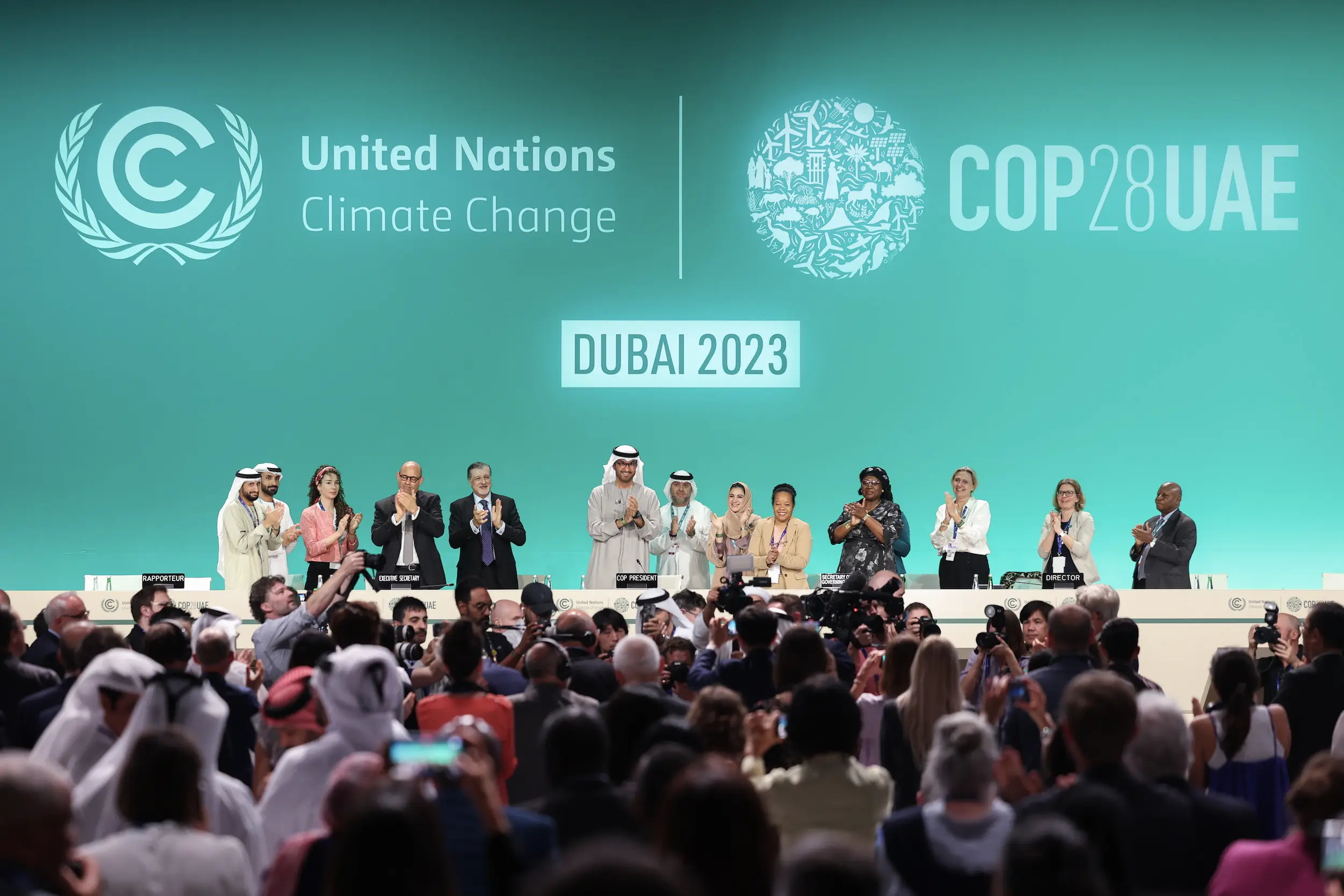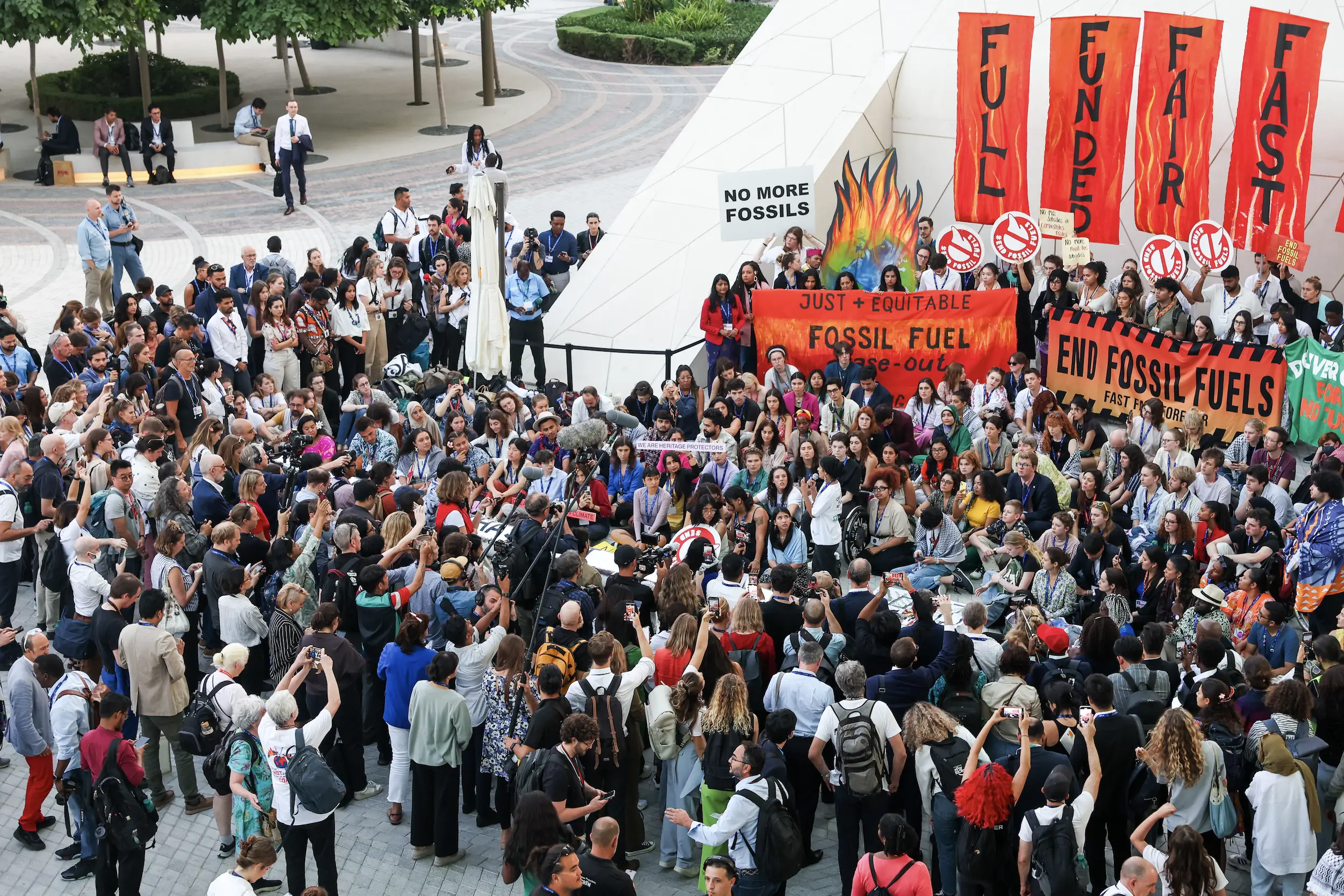The UN climate talks held earlier this month in Dubai ended with a deal that seemed unlikely only a day before: Representatives from nearly 200 nations at the 28th Conference of Parties (COP28) signed an agreement that calls for “transitioning away” from fossil fuels in a “just, orderly, and equitable manner.” Some hailed the outcome as a milestone, since in the almost 30-year history of the conference delegates had never reached consensus on language that included stepping back from oil and gas. But others criticized the pact as inadequate, since it fell short of calling for the fossil fuel “phase out” that most countries had been pushing for.
The results of the negotiations dominated much of the news coverage emerging from COP. But the headlines revealed little about developments that happened in parallel, or their relevance to buildings and those who design them. RECORD spoke to a handful of architects and industry experts who were on the ground in Dubai to get their take.
“COP is a massive information fest on all things climate,” says Emily Grandstaff-Rice, a senior associate at Perkins&Will. As 2023 president of the American Institute of Architects (AIA), Grandstaff-Rice was part of the organization’s delegation in Dubai. The two-week meeting included hundreds of official so-called “side events,” with presentations, panel discussions, round tables, and exhibits. And in addition to the country representatives (the Parties), a broad range of other groups participated, including nonprofits, local government officials, business leaders, indigenous peoples, and climate scientists. Nearly 90,000 people attended.
Accredited participants, officially recognized as “observers,” can listen in on some of the negotiations, but the real opportunity for them is to help translate the high-level climate goals into implementation and action, explains Lisa Richmond, founder of Seattle-based consulting firm Climate Strategy Works. “That is where civil society comes in,” says Richmond, who is a senior fellow for the non-profit advocacy group Architecture 2030 and part of its COP28 delegation. Architect and engineer Lori Ferris, another Architecture 2030 senior fellow at COP, explains that the work of NGOs can inform individual countries’ commitments, known as nationally determined contributions, or NDCs. “We are connecting the dots,” she says.

On the last day of the conference in Dubai, Sultan Al Jaber, COP28 president, brokered a deal with nearly 200 countries to transition away from fossil fuels. Photo by COP28/Christopher Pike via UNclimatechange/Flick
Grandstaff-Rice points out that sustainable strategies for buildings need to play a paramount role in climate mitigation and adaptation. She notes that between 2020 and 2060, the world’s floor area is expected to double, growing by 2.6 trillion square feet. Already, the built environment accounts nearly 40 percent of global CO2 emissions annually. “If we could commit to net zero or climate positive, that would have huge implications for the planet,” she says.
One development that could help facilitate the required transformation is a Buildings Breakthrough initiative announced in Dubai. A collaboration of the governments of France and Morocco with the UN Environment Programme (UNEP), the effort is part of a larger “Breakthrough” program launched two years ago at COP26 in Glasgow targeting high carbon-emitting industries, such as power, transportation, and agriculture. Now it includes buildings, with the goal of making “clean technologies and sustainable solutions the most affordable, accessible, and attractive options in all regions by 2030.” The idea, says Richmond, is to make near-zero emissions the new norm. Along with France and Morocco, 25 other countries, including the United States, have signed on to the commitment. Together, these nations account for 51 percent of global greenhouse gas emissions.
Other building-related announcements at COP include the World Health Organization’s unveiling of a framework for resilient and low-carbon health systems. One piece of this global initiative encompasses the retrofit and construction of hospitals and clinics to reduce their carbon footprint and their vulnerability to a changing climate. According to Illya Azaroff, founding principal of Brooklyn-based +LAB Architect and a member of the AIA’s group at COP, architects were not initially part of the framework’s vision. But now, AIA members have been invited to apply to its working groups. “We’ve increased our visibility and the opportunity to affect change,” he says. “This is an important shift in a major sector.”

A demonstration at COP28 in Dubai calling for the phase out of fossil fuels. Photo by COP28/Christopher Pike via UNclimatechange/Flick
This work, naturally, can’t happen without money. So far, precious little has been allocated, though COP did begin with wealthy nations—those historically responsible for climate change—pledging $700 million in “loss and damage” funds to help vulnerable countries pay for the economic impacts of a warming planet. Azaroff notes, however, that the total is a tiny fraction of what is needed. It’s enough, he says, to make one community whole again after a single devastating storm.
There is also a huge need to fund adaptation. For example, nearly 600 million people in sub-Saharan Africa are without electricity. Investment in clean energy systems would advance equity in the region as well as carbon reduction goals, says Azaroff. Richmond cites Nigeria, whose economy is dependent on income from the petroleum industry. “The lack of money on the table for a just energy transition is a big miss,” she says. “We need to help them do it right.”
Azaroff is optimistic that architects can help remedy the funding problem. He mentions AIA’s work with the World Business Council for Sustainable Development focused on transforming finance to support adaptation and mitigation. The outcomes of this collaboration will be presented in Paris in March at a UNEP Building and Climate Global Forum. They should also help shape talks for COP29, which is slated to be held in Baku, Azerbaijan. “I’m thrilled,” says Azaroff, “to see this action.”






Post a comment to this article
Report Abusive Comment